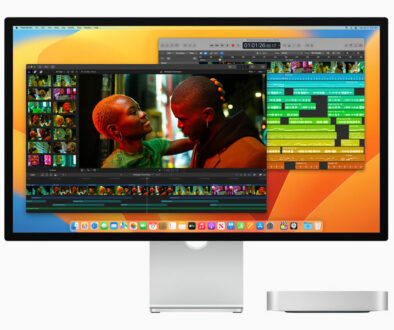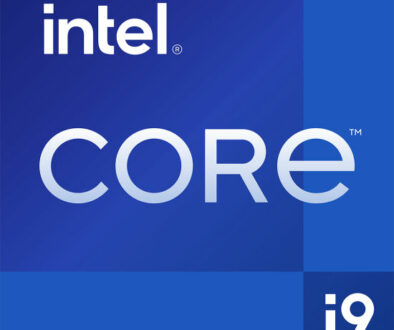Best Value for Money Graphics Cards for Your PC: Budget discrete GPUs by performance
Graphics Cards have always been the single most important component for enthusiasts and professional worldwide looking to game on their PCs. For a long time, the fight has always been between AMD Radeon and Nvidia to dominate the gaming space. Both behemoths have come up with their offerings for various budgets to cater to the needs of the gamers. Today, we look at some of the graphic cards which offer the best performance in the budget category.
1. Nvidia GeForce GTX 1650 GDDR6
Nvidia came up with an improved version of its GTX 1650 last year retaining the same architecture but with reduced base and boost clock speeds. The improvement has been made largely on the memory type which has gone from GDDR5 to GDDR6. From the previous generation, the new GTX 1650 GDDR6 sees a flat increase to 12 Gbps memory from 8 Gbps which will increase the memory bandwidth to 192 Gbps from the previously available 128 Gbps. Even with reduced clock speeds to 1410 MHz on the base clock and 1590 MHz on the boost clock, the GDDR6 memory variant has been seen to offer 12-15 per cent improvement in performance in various games. The TDP remains at 75 watts and a 6-pin power connector is still needed to power this card up.

This card offers decent performance in the budget segment as it can handle most titles at 1080p resolutions with medium to high settings. Some gamers have managed to extract playable fps on Horizon Zero Dawn at Ultra Settings too. There is a variation of prices between 150 USD to 195 USD for this card depending on which OEM you choose to go with. EVGA in particular has offered a metal backplate which helps to keep the card cool at high loads. Here is an fps comparison of the EVGA GTX 1650 GDDR6 in Far Cry 5.

Outbound Link: Tom’s Hardware
2. AMD Radeon RX 5500 XT
As AMD says, in the budget segment where gamers look for the best price to performance and performance per watt ratios, the 5500 XT is a clear winner. It can run almost all games at medium settings on a 1080p resolution. It has the capacity (technology) to run many titles at Ultra Settings at 60 fps too. Although this doesn’t mean it is future proof. It trades blows with the (below mentioned) GTX 1650 as well as GTX 1650 Super. It is a compelling card at the sub 200 USD mark (provided you can get your hands on at factory launched prices amongst the current ongoing supply shortages).

The technology behind the 5500 XT’s exceptional performance is its 7nm process which when clubbed with GDDR6 memory can run many AAA titles at even Ultra Settings. The base clock and game clock speeds are around 1607 MHz and 1717 MHz respectively but expect this to change on various partner models. There is an additional AMD boost clock of 1845 MHz which further enhance the capability of the card.
Premium performance needs premium power and that can be seen from its TDP of 130 watts. It needs an 8-pin power connector and a capable PSU to power this card. One big turn off for this card is the lack of Crossfire Support as AMD’s logic behind this decision can be clearly understood looking at the performance this card delivers at the 200 USD mark. Here is a look at RX 5500 XT ripping apart Gears of War 5 at FHD resolutions in Ultra Settings.

3. Nvidia GeForce GTX 1650 Super
Nvidia launched the GTX 1650 Super in response to AMD’s budget super card 5500 XT above. It is a superb value for money card which offers 1080p at around 160 USD. It sits at a nice price to performance point in the budget segment for Nvidia. The biggest takeaway from this card is its NVENC technology which offers live streaming capabilities to gamers. Many have hailed GTX 1650 Super to be the card that has been able to dislodge the long-running AMD RX 570 as gamer’s go-to card. The Nvidia card offers almost 30 per cent more performance than its AMD counterpart while using considerably low power. The performance is expected is to be closer to the mid-segment GTX 1660. Gamers can expect 60+ fps in most top-of-the-line gaming titles.

The GTX 1650 Super is blessed with 1250 logical units which are significantly higher than the non-Super version. It is equipped with the latest GDDR6 memory which when coupled with its 128-bit memory bus delivers unparalleled performance at this price point. The one we are featuring here is from MSI as it has one of the highest clock speeds of all GTX 1650 Super cards. Add to it the MSI Afterburner application and you are looking at a card that can be safely overclocked though slightly to improve the performance even more. The GTX 1650 Super from MSI has a boost clock speed of 1755 MHz and needs a 6-pin power connector. A branded PSU with 350 watts or more is enough to power the GTX 1650 Super. The icing on the cake is the VR capability of this latest offering from Nvidia. Here are the numbers of GTX 1650 Super in Total War: Three Kingdoms at Ultra Settings.

Outbound Link: AnandTech
4. Nvidia GeForce GTX 1050 Ti
Although it is fast approaching towards becoming a legacy card, the GTX 1050 Ti still packs a punch. It is a card that can still handle the latest games at 720p resolution at high quality. Millions have already been sold worldwide and with the latest graphics cards going Out of Stock due to supply shortages, many enthusiasts have turned their attention to GTX 1050 Ti. The performance that can be extracted from this single fan GPU with such a small form factor can be compared to a stick of pocket dynamite. It has commendable performance in 1080p resolution and blistering performance at 720p resolution makes it the best card in the budget segment.

The GTX 1050 Ti is a versatile graphics card as Gigabyte alone has more than 5 variants of the same card with different clock speeds. The boost clock speeds range from 1430 MHz to 1531 MHz. It is a power-efficient card as it needs less than 75 watts of power and does not need any auxiliary power connector. It can draw all its power from the PCIe bus. Here is an example of its performance in GTA 5. The biggest advantage of the GTX 1050 Ti is its low profile and size which makes it a nice choice for people who don’t want to upgrade their full system at a go. An offering from Zotac particularly is very much suitable for small chassis.

Outbound link: Tom’s Hardware
5. Honourable Mention: AMD Radeon RX 570
AMD RX 570 was considered as the king of budget graphics cards with its superior performance on a shoestring budget. Since then, the RX 570 is a card with technology that can be termed as ancient. Yet it has the internals to be a powerful gaming card for beginners. There is no ray tracing or RDNA or even dedicated streaming support. However, the bus supplied is 256 bit and has more than 2000 stream processors on GDDR5 memory which allows users to use a huge memory bandwidth of more than 200 Gbps. Rest assured it can handle the most demanding games with ease at medium settings. On the negative side, its TDP is 150 watts and needs a robust PSU to run. Since it’s almost at end of its life, some old stock of RX 570 may be available at cut-price deals which could be a very attractive option for many whom are looking for an affordable graphics card.

Conclusion
Currently, due to supply shortages pertaining to various factors, there is a severe shortage of graphics cards worldwide on different e-commerce portals. The available ones are being priced exorbitantly. We have seen some cards retail at more than 200 per cent the price it was launched at.
If you are in dire need of upgrading your hardware, you may go ahead even if your preferred device is priced at 25 per cent more than the usual retail prices. Anything above that would be a strict no from us as you could get a much better card at such prices once the prices normalize.
So, there we have it. 5 graphics cards in the budget segment with the best performance to price ratio. These cards are equipped with the latest technology and would do well to keep you gaming for at least 3 years.
Edited by Samuel J. Tan










